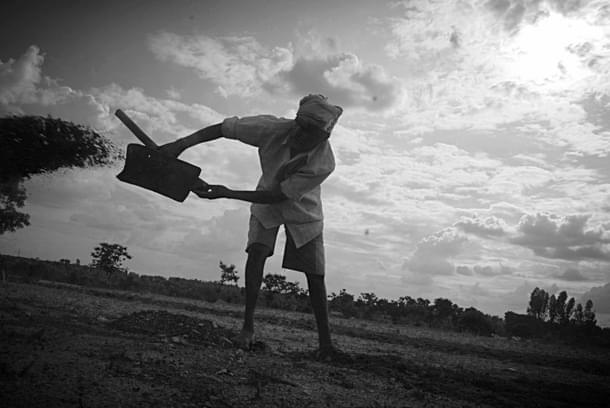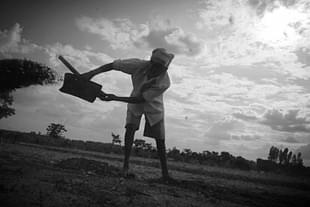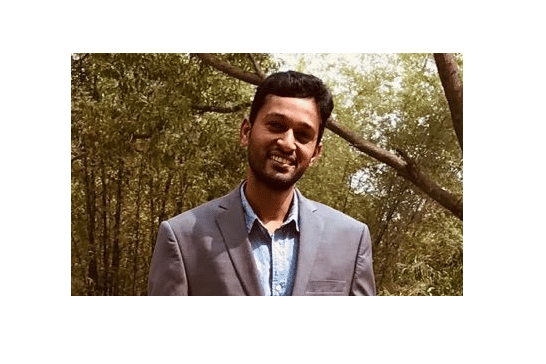Politics
Starved Of Water For Irrigation, North Karnataka Farmers Look For Divine Intervention
M R Subramani
Aug 16, 2018, 03:55 PM | Updated Aug 15, 2018, 11:54 PM IST
Save & read from anywhere!
Bookmark stories for easy access on any device or the Swarajya app.


If you happen to land up in Bengaluru and hire a cab, chances are, the driver could be from north Karnataka. A significant number of cab drivers in Bengaluru is from that region. Again, a majority of the employees in the Bangalore Metropolitan Transport Corporation is from north Karnataka.
“The problem in north Karnataka is that you cannot make a living out of agriculture. To make a livelihood, people from the region move out to places like Bengaluru and Mangaluru. There is no dedicated water channel from the 1970s,” says a farmer from the region, who doesn’t want to be identified.
North Karnataka has a good landscape, where it is easy for water to flow. “But the region has been rainfall-deficient for many years now,” says Prakash Malwad, a software engineer from the region, now employed in Bengaluru. He is also actively participating in the Sabrad Mutt activities seeking water for the region.
North Karnataka, comprising Belagavi, Vijayapura, Bagalkot, Bidar, Bellary, Gulbarga, Yadagiri, Raichur, Gadag, Dharwad, Haveri, and Koppal districts, is a semi-arid region that is dependent upon river Krishna and its tributaries Bhima, Ghataprabha, Malaprabha, and Tungabhadra. The region is supposed to receive adequate rainfall to keep agriculture going. But during this year’s south-west monsoon, which began on 1 June, the region received 24 per cent lower rainfall than normal.
Between 2013 and 2017, the region got a 2 per cent surplus annual rainfall in 2015, and it has received deficient rainfall during the other years – the deficiency ranging from 28 per cent in 2013 to 16 per cent last year. In 2014, the deficiency was 2 per cent, and in 2016, it got 26 per cent lower than normal rainfall. If this is the case in the last five years, the situation before that can be arrived at reasonably. It was for this very reason that the Renuka Sagara dam or Malaprabha reservoir, the shortest in Karnataka, was constructed in 1972, mainly to cater to the region’s drinking-water needs.
The Renuka Sagara dam has a capacity to store 37.73 thousand million cubic (TMC) feet of water. But it has been reduced to 34 TMC with silt accumulating. Though built to meet the drinking-water needs, some 7.73 TMC has been earmarked for irrigation purposes.
“The Renuka Sagara dam has filled only five times in these 46-odd years. The problem is that its catchment area is small, which can hardly get 20 TMC of water flowing to the dam,” says Vijay Kulkarni, a farmer from Nargund town region who heads the Kalasa-Banduri Horata Samiti, adding that there is no dedicated canal to deliver water to farm lands.
“Water from the reservoir is not reaching the last intended point,” says Malwad. In view of the catchment area being small and the dam not filling up, the Karnataka government came up with a proposal to divert some 7.56 TMC of water from the Mahadayi River, which originates in Karnataka and flows into Goa and Maharashtra before emptying into the Arabian Sea.
There is a story behind the proposal of plans to divert water from the Mahadayi River, know as Mandovi on the Goan side. In 1980, farmers of Dharwad and Gadag districts launched a movement demanding drinking water because the state government was collecting a levy for development without providing water. Then-chief minister R Gundu Rao appointed a panel headed by opposition Janata Party leader S R Bommai.
Bommai and his committee members recommended the diversion or linking of Mahadayi River to Malaprabha River, but the report gathered dust until 1989 when Bommai himself became the chief minister. But as his government fell within a few months, the plans ran aground, though he managed to sign a memorandum of understanding to construct a dam at Kalasa.
Under this plan, the S M Krishna government took up the Kalasa-Banduri project in 2002, though the original plan was to divert the water to Navilatirtha dam in Dharwad district. However, the issue got stuck with the Manohar Parrikar government seeking the setting up a water-dispute tribunal to decide how the Mahadayi River water was to be shared between Goa, Karnataka, and Maharashtra. Things got stuck there, again, after the Goa government pointed out that the water project would damage the environment and the whole project was, therefore, put aside.
The United Progressive Alliance government gave life to Karnataka’s plans in 2010 when it set up the Mahadayi Water Disputes Tribunal. The state sought the tribunal’s go-ahead for the Kalasa-Banduri project so that it could meet its drinking-water needs rather than let out water into the sea. Karnataka’s efforts bore fruit on 14 August this year when, in a partial relief to Karnataka, the Mahadayi Water Dispute Tribunal gave it permission to divert 5.5 TMC of water from Mahadayi to Malaprabha River during monsoon.
“Karnataka is clear in its demand. While we are seeking water, we have agreed to provide electricity to Goa,” said Malwad. In its 14 August ruling, the tribunal also allowed Karnataka to utilise 8.02 TMC of water to produce power. “We need water for irrigation and drinking. In Goa, the water is used for catching river water fish,” adds Malwad.

Nearly 35 km of Mahadayi River flows in Karnataka and the rest 52 km in Goa. Maharashtra’s contribution to the river is that it houses a significant section of the catchment areas. Diverting the water from Mahadayi will help farmers in Gadag, Dharwad, Belagavi, and Bagalkot districts. “The issue could have been sorted out earlier. During A B Vajpayee’s regime, when the issue cropped up in the Supreme Court, neither Karnataka nor Goa nor Maharashtra filed any petition. Since no state came forward, the Supreme Court asked the Prime Minister to decide and it has been prolonging,” says Kulkarni.
The whole issue over Mahadayi River water sharing has gotten so politicised that a group of farmers, led by 101-year-old freedom fighter Doraiswamy, has petitioned the Supreme Court seeking euthanasia. Their petition will come up for hearing on 20 August. But with the tribunal allocating water, the issue will likely be settled soon. “All these years, we have been deprived of water for irrigation. We are just able to make our ends meet,” says Kulkarni.
Due to water shortage, farmers in the region cultivate dry-land crops such as millet, maize, green gram, and groundnut. “What we grow is just enough to fill our stomach,” adds Kulkarni.
“The whole issue has been politicised so much that farmers have to threaten suicides to get water. This has resulted in this region not getting any investment at all,” says Malwad.
If this is the issue with Mahadayi and Malaprabha, Karnataka also has a problem with the Tungabhadra dam built across the Tungabhadra River, which is a tributary of the Krishna River. The dam can serve Ballari, Koppal, and Raichur districts in the state, but, like the Renuka Sagara dam, it doesn’t get filled to capacity annually. Initially, the dam’s capacity was to store 133 TMC of water, but years of negligence has resulted in the storage level dropping to less than 100 TMC.
M B Patil, Water Resources Minister in the previous Congress government, told the state assembly in June last year that it would be an impossible task to remove the silt in the dam. Last year, when Karnataka farmers in Hosapete began desilting on their own, Patil said they would, at the most, be able to remove only 0.11 per cent of the silt that has accumulated over the years.
When the dam was opened in 1953, engineers had suggested that 0.5 per cent of the silt be dredged every year. But with successive governments turning a blind eye to this action, nearly 37 TMC of silt has accumulated in the dam.
Patil told the assembly that Karnataka would needs thousands of crores to desilt the dam besides 76 acres of land where the silt would be stored at a height of 10 feet! The Siddaramaiah government had proposal to desilt a nearby reservoir, but nothing much was heard of it. “Tungabhadra is more to meet drinking-water needs,” says Kulkarni.
With its water-storage projects running into such problems, north Karnataka is hoping for some divine intervention to help them out of the current mess. “We are looking to the Supreme Court to rescue us,” says Malwad and Kulkarni, underlying the reason for the anger and protests in the region.
It is because of the problems with deficient rainfall and reaching waters of Mahadayi, Tungabhadra, and Malaprabha that Karnataka is more focused on southern Karnataka. Also, the Cauvery covers a larger area in the south and has many tributaries that helps agriculture. With the Karnataka government focusing more on preserving Cauvery River, it has constructed more reservoirs in that river basin. On the other hand, its plans for north Karnataka have not been up to the mark and unclear in view of the Mahadayi dispute. Thus, South Karnataka has received more attention and more focus. No surprise, then, that north Karnataka feels let down.
M.R. Subramani is Executive Editor, Swarajya. He tweets @mrsubramani





